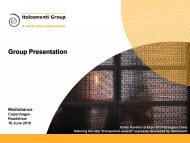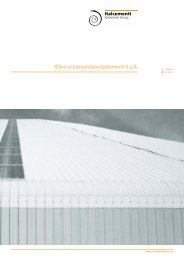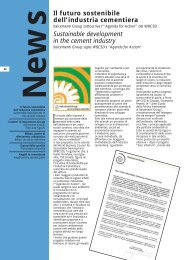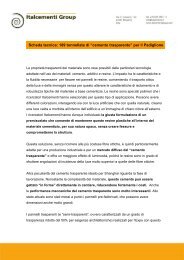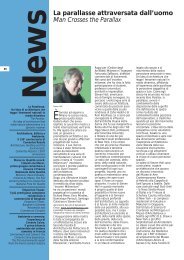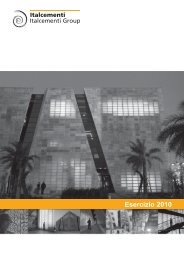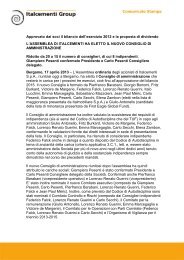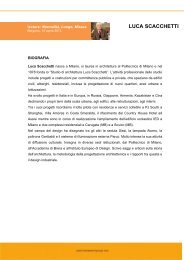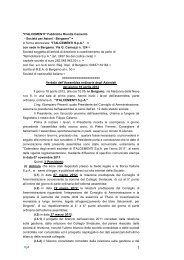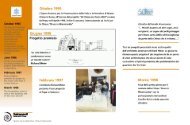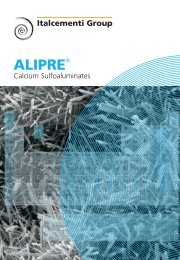2011 Annual Report - Italcementi Group
2011 Annual Report - Italcementi Group
2011 Annual Report - Italcementi Group
You also want an ePaper? Increase the reach of your titles
YUMPU automatically turns print PDFs into web optimized ePapers that Google loves.
1.5 Translation of foreign currency items<br />
The functional currency of the subsidiaries located outside the euro zone is usually the local currency.<br />
Foreign currency transactions<br />
Foreign currency transactions are initially translated to the functional currency using the exchange rate at the<br />
transaction date. At the reporting date, foreign currency monetary assets and liabilities are translated to the<br />
functional currency at the closing rate. Exchange rate gains and losses are taken to the income statement.<br />
Non-monetary foreign currency assets and liabilities measured at cost are translated at the exchange rate<br />
ruling at the transaction date; those measured at fair value are translated with the exchange rate at the date<br />
fair value was determined.<br />
Translation of the financial statements of foreign entities<br />
At the reporting date, the assets, including goodwill, and liabilities of consolidated companies that report in<br />
currencies other than the euro are translated to the presentation currency of the <strong>Group</strong>’s consolidated financial<br />
statements at the exchange rate ruling at such date. Income statement items are translated at the average rate<br />
for the period. Gains and losses arising from the translation of opening equity at the closing rates and those<br />
arising from the different method used to translate profit or loss for the period are recognized in a specific<br />
equity caption. In the event of subsequent disposal of a foreign entity, the cumulative translation differences<br />
are taken to the income statement.<br />
As allowed under IFRS 1, cumulative translation differences at the date of first-time adoption of the IFRS have<br />
been reclassified in “Retained earnings” under equity and therefore will not be taken to the income statement in<br />
the event of subsequent disposal.<br />
1.6 Property, plant and equipment<br />
Recognition and measurement<br />
Property, plant and equipment are recognized at cost, less accumulated depreciation and impairment losses.<br />
Cost includes the purchase or production cost and the directly attributable costs of bringing the asset to the<br />
location and the conditions required for its operation. Production cost includes the cost of materials and direct<br />
labor costs. Finance costs relating to the purchase, construction and production of qualifying assets are<br />
capitalized.<br />
The carrying amount of some assets existing at the IFRS first-time adoption date of January 1, 2004, reflects<br />
revaluations applied in prior periods in connection with specific local laws, based on the real economic value of<br />
the assets in question. Assets acquired through business combinations are stated at fair value, determined on<br />
a provisional basis at the acquisition date and subsequently adjusted within the following twelve months.<br />
Subsequent to initial recognition, property, plant and equipment are carried at cost and depreciated over the<br />
asset’s useful life, less any impairment losses.<br />
Assets under construction are recognized at cost; depreciation begins when the assets enter useful life.<br />
When an asset consists of components with a significant cost and different useful lives, initial recognition and<br />
subsequent measurement are carried out separately for each component.<br />
Subsequent expense<br />
Repair and maintenance expense is normally recognized as incurred. Component replacement costs are<br />
treated as separate assets and carrying amount of the replaced component is expensed.<br />
76



